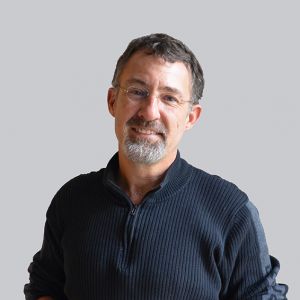 Walt’s insights from the road…
Walt’s insights from the road…
I recently had two parallel experiences that have struck me as being highly instructive, in many ways, for me in my service to a client, and to Mazzetti as an organization.
Is centralization THE best way to operate for all healthcare organizations?
First, I was asked by a friend of mine from a hospital to collaborate on a presentation for the Healthcare Design Conference in two weeks. We are two of three presenters, and our topic is about how healthcare organizations can maximize the benefits that come from centralization. As you may know, for all kinds of reasons, the healthcare industry is going through an historic consolidation right now. As they do, the organizations are growing, and, as they grow, they are struggling to figure out how to work together effectively. This is a very big deal, and it is not so easy to get right. There are highly-paid consultants out there telling everyone how they should do it, and, from my perspective, not always so well.
To prepare for our presentation, we did a survey of lots of facility people in healthcare systems around the country (To be fair, I get little to no credit for the survey, as it was primarily execute by one of my colleagues.). One of the striking findings is that, of all functions, the one least integrated as an aftermath of organization consolidation is facility design, construction, and operation. The mostly highly integrated function, by the way, is payroll. I find this fascinating. The thesis of our presentation is that organizations are losing opportunities by failing to realize the opportunities that consolidation provides. I do believe this to be true, but I am less of a zealot on the issue than are my co-presenters. In fact, I think there are some significant benefits to de-centralization, and I pretty strongly believe that the right model is a blend of centralized power and distributed power. I have seen the downsides of too much centralization and the unintended waste consequences this governance model creates. I have seen the same highly paid consultants decentralize organizations to make them more nimble.
Applying this knowledge with a client.
Ironically, I am also working with a client on a project right now that includes looking at these very issues with respect to energy consumption. This client, I think, is brilliant. (Out of respect for the client, the name will remain confidential.) They are trying to move the needle on their energy consumption, and I am helping them to develop a five-year plan to help them do it. Part of our work is to help them define organizational structures, systems, processes, and accountabilities to hard-wire needed behaviors into the organization. The goal is to ensure that the organization succeeds in reducing its energy costs, but also, to use the opportunity to examine its processes in order to become a more effective organization.
For the last two days, we have been working with leaders in this organization to run a workshop to help define these structures, systems, processes, and accountabilities, and I have learned as much from them as I hope I have been able to contribute to them. We pulled together people from a wide range of positions and departments, and we worked in a collaborative way to try to define these things for the organization. Core to the work was an analysis of whether the organization should be highly centralized, highly de-centralized, or somewhere in the middle. As you might expect from my preamble, the team, with its varied perspectives, concluded that a mix of both was the optimal solution, bringing strengths from both models, and mitigating weaknesses of both models. Details are not yet finalized, but we have a great framework for moving forward.
Looking inward.
As I say, this experience has provided me with a flood of insight. First, I believe even more strongly that this kind of hybrid approach is the right one. This is important as we help all of our clients in thinking through their strategies for infrastructure investment. It is equally important, of course, as we design our company. Through the years, we have grown both organically and by combining with other companies. Through the years, we have more or less instinctively tried to figure out the best ways to organize and manage ourselves in order to build the kind of company that we want to be. This has not been easy, and it has not been perfect. We struggle with exactly the same kinds of questions. How much freedom do we give to our teams? What kind of people do we want (answer: brilliant innovative ones), and how much freedom do these kinds of people demand (answer: a LOT)? How much risk can we tolerate by giving people freedom, and how much efficiency do we lose in the process, and is that loss tolerable? Locating the precise place on the dial for a particular organization for this precise question is a universal pattern for organizational development. We continue to seek the right place on the dial for our clients and for our selves.
It boils down to connecting with people.
But, the more important lesson was not that. As I sat there yesterday, the national energy expert, one of the people at my table turned to me and said,
“Look, this is a waste of time; you are the expert, why don’t you just tell us what to do.”
That, indeed, is the easy, efficient, tempting way to do this kind of thing. It reminded me powerfully of people who asked me why we had so many people involved in our Mazzetti strategic planning process. And my answer to both of these people was that both efforts required much more than the right ideas; they required the emotional commitment of the people who would be involved in doing the work. In both cases, if I just told people what to do, they could not possibly experience the power of the ideas for themselves, and could not possibly imbibe the spirit of the ideas and make them their own. Indeed, when we started this assignment for this client, one of the things I was most worried about was whether this organization would be culturally ready to make the kinds of changes I knew they would need to make in order to make their energy plan work. The truth is, the energy plan isn’t about energy. Its about people doing the right things and doing them the right way, and doing them right over and over and better and better forever, whether I “tell” them or not.
I more or less said this to the person who wanted to be told what to do, and he went along and completed the day. At the end of the day, we heard a lot of people saying things like this:
“Usually, I dont get to talk to people outside of my department, so nobody knows what I do, and I dont know what anybody else does either. For the first time, because I am now connected, I feel like I am part of a group of people where I can make a difference.”
It was fantastic. I know that this organization will meet their energy goals, and, in so doing, they will transform themselves. At the end of the day, you see, its not really about the organizational structure. Its about helping the people inside the organization connect to one another, and to understand what each other does, and to understand what they are all trying to do together, and to understand that their first priority is to help each other, so that they can be successful together.
Working on the same team.
And that is the lesson for Mazzetti, too, as a company. I see people in this company doing this every day, and for that, I am humbled and grateful. I don’t think we will ever find the perfect organizational structure, and neither will anybody else. I don’t think we can live in a Nirvana where there are no challenges and no mistakes and no disappointments. What we can find, what we can model, what we can try to help our clients find, is the heart to know that we are working together for each other and for the good of our clients and their clients and the common good. So long as each of us understands each other, and serves each other, and models that behavior for those we touch, we will achieve our vision, and we will help our clients to achieve theirs.
Interested in what you see? Subscribe to receive monthly news and information
more tailored to what you need.

